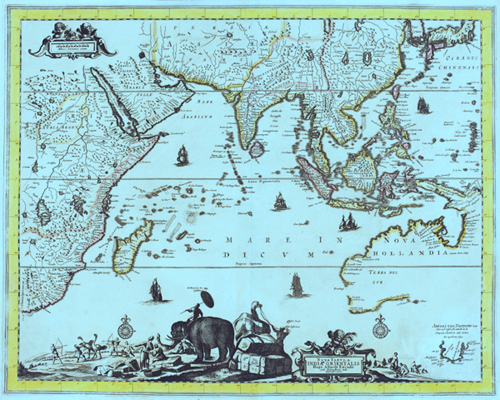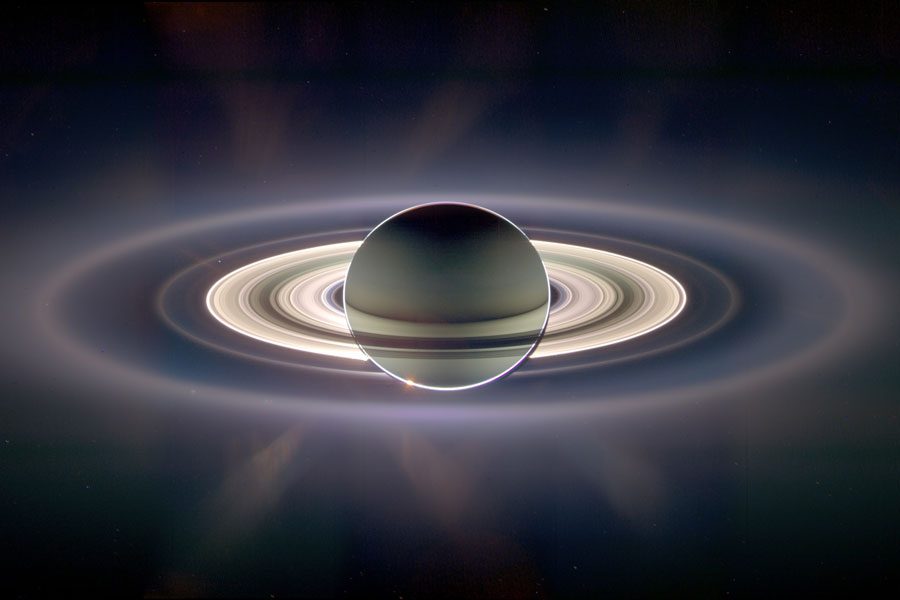http://geology.com/google-earth/
Ice between Canada and SW Greenland: highest level in 15 years.
16 02 2008 As yet another indicator of the impact January 2008 has had on the Northern Hemisphere, we find this story from Greenland’s Sermitsiaq News:
As yet another indicator of the impact January 2008 has had on the Northern Hemisphere, we find this story from Greenland’s Sermitsiaq News:
Minus 30 degrees Celsius. That’s how cold it’s been in large parts of western Greenland where the population has been bundling up in hats and scarves. At the same time, Denmark’s Meteorological Institute states that the ice between Canada and southwest Greenland right now has reached its greatest extent in 15 years.
‘Satellite pictures show that the ice expansion has extended farther south this year. In fact, it’s a bit past the Nuuk area. We have to go back 15 years to find ice expansion so far south. On the eastern coast it hasn’t been colder than normal, but there has been a good amount of snow.’
According to collated data from the NASA Marshall Space Flight Center and the University of Illinois, Arctic ice extent was 30 per cent greater on August 11, 2008 than it was on the August 12, 2007. This is a conservative estimate based on the map projection.
 Blue pixels represent increased ice coverage over the North Pole in the year since August 2007.
Blue pixels represent increased ice coverage over the North Pole in the year since August 2007.
The video below highlights the differences between those two dates,” reports The Register. “As you can see, ice has grown in nearly every direction since last summer - with a large increase in the area north of Siberia. Also note that the area around the Northwest Passage (west of Greenland) has seen a significant increase in ice. Some of the islands in the Canadian Archipelago are surrounded by more ice than they were during the summer of 1980.”

The Antarctic.
But what of the Antarctic down south? Figures tell us that ice coverage in the year since August 2007 has grown by nearly one million square kilometers.
As The Register article notes, “The Arctic did not experience the meltdowns forecast by NSIDC and the Norwegian Polar Year Secretariat. It didn’t even come close. Additionally, some current graphs and press releases from NSIDC seem less than conservative. There appears to be a consistent pattern of overstatement related to Arctic ice loss.”
A general cooling trend across the planet is now clearly apparent as sunspot activity, the main driver of climate change, dwindles to almost nothing.
As we reported last week, A top observatory that has been measuring sun cycles for over 200 years predicts that global temperatures will drop by two degrees over the next two decades as solar activity grinds to a halt and the planet drastically cools down, potentially heralding the onset of a new ice age.
While the mass media, Al Gore and politicized bodies like the IPCC scaremonger about the perils of global warming and demand the poor and middle class pay CO2 taxes, both hard scientific data and circumstantial evidence points to a clear cooling trend.
How man-made global warming advocates will spin this one remains to be seen - maybe they will just continue to adopt their current tactic by claiming that any geological or weather event whatsoever, be it hurricanes, earthquakes, droughts or floods, temperature increase or decrease, and even a 30 per cent growth of the polar ice cap - is a result of that evil life-giving gas that we exhale - CO2.
According to collated data from the NASA Marshall Space Flight Center and the University of Illinois, Arctic ice extent was 30 per cent greater on August 11, 2008 than it was on the August 12, 2007. This is a conservative estimate based on the map projection.
This article appears in the April 14, 2006 issue of Executive Intelligence Review. Greenland Ice Sheet Growing: What Makes an Ice Age?Have you been duped by a mass of propaganda about global warming? 21st Century Science & Technology Editor Laurence Hecht explains why the Earth is poised to enter a new glaciation. Despite mountains of propaganda to the contrary, a mountain of ice in the center of Greenland has been growing over the recent decade. The floating ice on the East Antarctic ice shelf is growing too, adding a much greater mass of sea ice than was lost in the much-publicized collapse of the West Antarctic shelf. These are among the surprising results of a study of ice-mass changes from 1992-2002, which just appeared in the Journal of Glaciology. The study, which went counter to many expert estimates, is based on the most precise satellite altimetry data ever gathered, using the European Remote-sensing Satellites ERS-1 and 2, and other observations. The increases in Greenland ice and Antarctic sea ice are outweighed, however, by a slight decrease in the ice buildup on the Antarctic land mass. This net excess of melted ice over newly frozen ice would increase the global sea level—but not by very much. Its net contribution to sea level comes to +0.05 millimeters per year, with an error margin of +/-0.03 mm. Thus, in a decade, the contribution to sea level increase from the melting ice would have amounted to from 0.2 to 0.8 millimeters—that is, less than 1/30 of an inch! The most important thing to recognize about this latest study, is that it says nothing about the future of the Earth's climate. No short-term climate trend can tell us that, because the primary determinants of Earth's climate are based on orbital-astronomical cycles of 21,000-, 40,000-, and 100,000-year duration. Understanding these orbital cycles is the key to being able to interpret for yourself, with a clear head, the mass of propaganda dished out every day by the global warming lobby, and to seeing why global warming itself is a myth. Astronomy Determines ClimateIn the first decades of the 20th Century, a scientific theory of climate emerged, based on the effects of three long-term cycles in the Earth's orbital relationship to the Sun. It was based on the work of the Russian-German meteorologist Vladimir Koppen (1846-1940), his son-in-law Alfred Wegener (the originator of the theory of continental drift), and the Serbian mathematician Milutin Milankovich. Their work drew upon a 19th-Century tradition which originated with an hypothesis of the German-English astronomer John Herschel. The key idea is that the amount of solar radiation (insolation) received at the Earth's surface varies, not only with the seasons, but with these longer-term variations in the Earth's orbit. Over time, it was shown that the major changes in climate of past epochs correlated with these orbital cycles. In the 19th Century, geologists had noted a wide array of observations which indicated that the Northern Hemisphere had passed through one or more cycles of glaciation. As these obervations were correlated over different parts of the Earth, it appeared that a sheet of ice had moved down from Greenland and the Polar region, burying the northern parts of North America and Eurasia in ice from one to two miles thick. The Glacial CyclesAt the turn of the 20th Century, it was thought that two to four such glaciation cycles had occurred, interspersed by periods of warmth. But further refinement showed that the Northern Hemisphere had passed through cycles of glaciation, interspersed by brief warmings, known as interglacials, almost every 100,000 years over the past 1.8 to 2 million years. The last 100,000-year glacial cycle achieved its maximum extent just 18,000 years ago, when North America was covered with a sheet of ice from one to two miles thick, reaching as far south as New York City, and Chicago. The science of climatology in the 20th Century showed that these changes in glaciation followed a cycle which closely correlated with the three major long-term variations in the Earth's orbit. Thus, if we can understand these orbital cycles, we can have a good idea what to expect in terms of climate. Let us briefly examine the three. Three Orbital CyclesWe begin with the angle of inclination of the Earth's axis to the plane of the ecliptic (the plane of revolution of the Earth's orbit), also known as the Earth's obliquity. Today, this angle is approximately 23.5°. But over a period of approximately 40,000 years, it can vary from slightly under 20° to 24°. (These variations are due to the perturbations in the Earth's orbit caused by the influences of the other planets, especially the very large one, Jupiter.) When the angle of inclination is smaller, the seasonal difference between the poles and the equator is moderated. If there were no inclination, there would be no seasons. We see that the Earth in the present epoch, at 23.5° inclination, is experiencing a high degree of orbital inclination. This means that the temperature extremes at the poles are great. We look next at the orbital cycle known as the precession of the equinox. The Earth's axis does not always point to the same position in the heavens. Over the course of about 26,000 years the Earth makes a wobbling motion like a top, such that the axis traces a cone in the sky. One effect of this is to change the position of the Pole Star. Today, it is near Polaris in the Little Dipper. About 13,000 years ago, it was near the star Vega in the constellation Lyra. The term "precession of the equinox" comes from the fact that ancient astronomers observed a gradual change in the alignment of the Sun against the background of stars, as it rose on the first day of Spring (vernal equinox). The effect upon climate of this conical wobble depends upon the interplay of two geometric features—the angle of inclination already discussed, and the fact that the Earth's orbit is not a circle, but an ellipse with the Sun at one focus. The variation in insolation which it produces depends in part upon Kepler's equal-area law. We call the two extreme positions of the orbit, perihelion (closest to the Sun), and aphelion (farthest away). Recall that the seasons are caused by the inclination of the Earth's axis. Northern Hemisphere Summer occurs when the Earth's axis is tilted toward the Sun, allowing the Sun's rays to strike more directly. However, Summer may occur either at perihelion or aphelion. Presently, the axis is so inclined with respect to the precession cycle that Northern Hemisphere Summer is occurring almost at the greatest distance from the Sun. Summer occurred at aphelion in approximately the year 1250—quite recently on this timescale. This leads to cooler Summers in the North, meaning that snow and ice which forms in the Winter is not melted off so easily. The third key cycle is the approximately 100,000-year variation in the shape of the orbital ellipse itself, which passes from quite eccentric to almost circular. When the eccentricity is small, the difference in insolation at aphelion and perihelion is slight. The eccentricity of the orbit can vary from near 0 to 0.07. At maximum, the variation of insolation between perihelion and aphelion is approximately 28%. The present value is 0.017, which can cause a variation of insolation of approximately 7%. This low value of eccentricity is the one astronomical factor that could cause a delay in the onset of the next glaciation. The Ongoing Ice AgeIt should be understood that the Earth is in an Ice Age today. The presence of numerous glaciers and the huge Greenland and Antarctic ice sheets tell us this. The question is: When is the Northern Hemisphere going to re-enter a period of glacial advance like the one that just ended about 10-12,000 years ago? The orbital cycles tell us that we are due for a new glaciation. In the past, the 100,000-year cycles of heavy glaciation were punctuated by a meltback or interglacial period, lasting from 9,000 to 12,000 years. The present interglacial is roughly 10,700 years old. We are thus ripe for an onset of glaciation. However, no short-term trend on the decadal or even century-long scale is likely to tell us whether a glaciation is about to start or not. There have been at least three cyclic warmings and coolings within our present interglacial. The climatic optimum peaked 7,000 years ago, when the average air temperature, inferred from ice volume, was about 2°F higher than at present. That was around the time that the Indian scholar B.G. Tilak provides as the most recent possible date for the composition of the Rig Vedas, when the vernal equinox was in Orion. His hypothesis of the polar origin of the Indo-European language group, however, does not exclude a dating to an earlier precession cycle. The two long-term warming cycles which occured from roughly 4,000 to 8,000 years before the present could have little to do with the greenhouse warming allegedly caused by industrial production of carbon dioxide. A Little Ice Age began about 650 years ago, and lasted into the 19th Century. Since then, the Earth has warmed slightly, but average temperature has not neared the optima of 7,000 and 4,500 years ago. The reasons for these shorter-term trends in climate are not fully understood. Many factors, including the position of the Earth in the galaxy, changes in the Sun's output, smaller cyclical variations in the Earth's orbit, ocean circulation currents, and others may be the causes. The study of these phenomena is a welcome part of current science. Historical climatology, combined with universal philology of the sort exemplified by Tilak's work, can also contribute greatly to unraveling some of the mysteries of the human past. It is unfortunate, however, that the imposition of the global-warming hoax, which dates to political operations instituted by Dame Margaret Mead and the malthusian Club of Rome in approximately 1980, continue to taint scientific studies and the output of many leading scientific institutions. For Further Reading: From 21st Century Science & Technology at www.21stcenturysciencetech.com: Laurence Hecht, "The Coming (or Present) Ice Age" (Winter 1992-93) Zbigniew Jaworowski, "Ice Core Data Show No Carbon Dioxide Increase" (Spring 1997) Zbigniew Jaworowski, "The Ice Age Is Coming!" (Winter 2003-04). |
This article appears in the April 14, 2006 issue of Executive Intelligence Review. Greenland Ice Sheet Growing: What Makes an Ice Age?Have you been duped by a mass of propaganda about global warming? 21st Century Science & Technology Editor Laurence Hecht explains why the Earth is poised to enter a new glaciation. Despite mountains of propaganda to the contrary, a mountain of ice in the center of Greenland has been growing over the recent decade. The floating ice on the East Antarctic ice shelf is growing too, adding a much greater mass of sea ice than was lost in the much-publicized collapse of the West Antarctic shelf. These are among the surprising results of a study of ice-mass changes from 1992-2002, which just appeared in the Journal of Glaciology. The study, which went counter to many expert estimates, is based on the most precise satellite altimetry data ever gathered, using the European Remote-sensing Satellites ERS-1 and 2, and other observations. The increases in Greenland ice and Antarctic sea ice are outweighed, however, by a slight decrease in the ice buildup on the Antarctic land mass. This net excess of melted ice over newly frozen ice would increase the global sea level—but not by very much. Its net contribution to sea level comes to +0.05 millimeters per year, with an error margin of +/-0.03 mm. Thus, in a decade, the contribution to sea level increase from the melting ice would have amounted to from 0.2 to 0.8 millimeters—that is, less than 1/30 of an inch! The most important thing to recognize about this latest study, is that it says nothing about the future of the Earth's climate. No short-term climate trend can tell us that, because the primary determinants of Earth's climate are based on orbital-astronomical cycles of 21,000-, 40,000-, and 100,000-year duration. Understanding these orbital cycles is the key to being able to interpret for yourself, with a clear head, the mass of propaganda dished out every day by the global warming lobby, and to seeing why global warming itself is a myth. Astronomy Determines ClimateIn the first decades of the 20th Century, a scientific theory of climate emerged, based on the effects of three long-term cycles in the Earth's orbital relationship to the Sun. It was based on the work of the Russian-German meteorologist Vladimir Koppen (1846-1940), his son-in-law Alfred Wegener (the originator of the theory of continental drift), and the Serbian mathematician Milutin Milankovich. Their work drew upon a 19th-Century tradition which originated with an hypothesis of the German-English astronomer John Herschel. The key idea is that the amount of solar radiation (insolation) received at the Earth's surface varies, not only with the seasons, but with these longer-term variations in the Earth's orbit. Over time, it was shown that the major changes in climate of past epochs correlated with these orbital cycles. In the 19th Century, geologists had noted a wide array of observations which indicated that the Northern Hemisphere had passed through one or more cycles of glaciation. As these obervations were correlated over different parts of the Earth, it appeared that a sheet of ice had moved down from Greenland and the Polar region, burying the northern parts of North America and Eurasia in ice from one to two miles thick. The Glacial CyclesAt the turn of the 20th Century, it was thought that two to four such glaciation cycles had occurred, interspersed by periods of warmth. But further refinement showed that the Northern Hemisphere had passed through cycles of glaciation, interspersed by brief warmings, known as interglacials, almost every 100,000 years over the past 1.8 to 2 million years. The last 100,000-year glacial cycle achieved its maximum extent just 18,000 years ago, when North America was covered with a sheet of ice from one to two miles thick, reaching as far south as New York City, and Chicago. The science of climatology in the 20th Century showed that these changes in glaciation followed a cycle which closely correlated with the three major long-term variations in the Earth's orbit. Thus, if we can understand these orbital cycles, we can have a good idea what to expect in terms of climate. Let us briefly examine the three. Three Orbital CyclesWe begin with the angle of inclination of the Earth's axis to the plane of the ecliptic (the plane of revolution of the Earth's orbit), also known as the Earth's obliquity. Today, this angle is approximately 23.5°. But over a period of approximately 40,000 years, it can vary from slightly under 20° to 24°. (These variations are due to the perturbations in the Earth's orbit caused by the influences of the other planets, especially the very large one, Jupiter.) When the angle of inclination is smaller, the seasonal difference between the poles and the equator is moderated. If there were no inclination, there would be no seasons. We see that the Earth in the present epoch, at 23.5° inclination, is experiencing a high degree of orbital inclination. This means that the temperature extremes at the poles are great. We look next at the orbital cycle known as the precession of the equinox. The Earth's axis does not always point to the same position in the heavens. Over the course of about 26,000 years the Earth makes a wobbling motion like a top, such that the axis traces a cone in the sky. One effect of this is to change the position of the Pole Star. Today, it is near Polaris in the Little Dipper. About 13,000 years ago, it was near the star Vega in the constellation Lyra. The term "precession of the equinox" comes from the fact that ancient astronomers observed a gradual change in the alignment of the Sun against the background of stars, as it rose on the first day of Spring (vernal equinox). The effect upon climate of this conical wobble depends upon the interplay of two geometric features—the angle of inclination already discussed, and the fact that the Earth's orbit is not a circle, but an ellipse with the Sun at one focus. The variation in insolation which it produces depends in part upon Kepler's equal-area law. We call the two extreme positions of the orbit, perihelion (closest to the Sun), and aphelion (farthest away). Recall that the seasons are caused by the inclination of the Earth's axis. Northern Hemisphere Summer occurs when the Earth's axis is tilted toward the Sun, allowing the Sun's rays to strike more directly. However, Summer may occur either at perihelion or aphelion. Presently, the axis is so inclined with respect to the precession cycle that Northern Hemisphere Summer is occurring almost at the greatest distance from the Sun. Summer occurred at aphelion in approximately the year 1250—quite recently on this timescale. This leads to cooler Summers in the North, meaning that snow and ice which forms in the Winter is not melted off so easily. The third key cycle is the approximately 100,000-year variation in the shape of the orbital ellipse itself, which passes from quite eccentric to almost circular. When the eccentricity is small, the difference in insolation at aphelion and perihelion is slight. The eccentricity of the orbit can vary from near 0 to 0.07. At maximum, the variation of insolation between perihelion and aphelion is approximately 28%. The present value is 0.017, which can cause a variation of insolation of approximately 7%. This low value of eccentricity is the one astronomical factor that could cause a delay in the onset of the next glaciation. The Ongoing Ice AgeIt should be understood that the Earth is in an Ice Age today. The presence of numerous glaciers and the huge Greenland and Antarctic ice sheets tell us this. The question is: When is the Northern Hemisphere going to re-enter a period of glacial advance like the one that just ended about 10-12,000 years ago? The orbital cycles tell us that we are due for a new glaciation. In the past, the 100,000-year cycles of heavy glaciation were punctuated by a meltback or interglacial period, lasting from 9,000 to 12,000 years. The present interglacial is roughly 10,700 years old. We are thus ripe for an onset of glaciation. However, no short-term trend on the decadal or even century-long scale is likely to tell us whether a glaciation is about to start or not. There have been at least three cyclic warmings and coolings within our present interglacial. The climatic optimum peaked 7,000 years ago, when the average air temperature, inferred from ice volume, was about 2°F higher than at present. That was around the time that the Indian scholar B.G. Tilak provides as the most recent possible date for the composition of the Rig Vedas, when the vernal equinox was in Orion. His hypothesis of the polar origin of the Indo-European language group, however, does not exclude a dating to an earlier precession cycle. The two long-term warming cycles which occured from roughly 4,000 to 8,000 years before the present could have little to do with the greenhouse warming allegedly caused by industrial production of carbon dioxide. A Little Ice Age began about 650 years ago, and lasted into the 19th Century. Since then, the Earth has warmed slightly, but average temperature has not neared the optima of 7,000 and 4,500 years ago. The reasons for these shorter-term trends in climate are not fully understood. Many factors, including the position of the Earth in the galaxy, changes in the Sun's output, smaller cyclical variations in the Earth's orbit, ocean circulation currents, and others may be the causes. The study of these phenomena is a welcome part of current science. Historical climatology, combined with universal philology of the sort exemplified by Tilak's work, can also contribute greatly to unraveling some of the mysteries of the human past. It is unfortunate, however, that the imposition of the global-warming hoax, which dates to political operations instituted by Dame Margaret Mead and the malthusian Club of Rome in approximately 1980, continue to taint scientific studies and the output of many leading scientific institutions. For Further Reading: From 21st Century Science & Technology at www.21stcenturysciencetech.com: Laurence Hecht, "The Coming (or Present) Ice Age" (Winter 1992-93) Zbigniew Jaworowski, "Ice Core Data Show No Carbon Dioxide Increase" (Spring 1997) Zbigniew Jaworowski, "The Ice Age Is Coming!" (Winter 2003-04). The purple shaded area shows the record ice cap growth this year in Antarctica:  James Taylor a Senior Fellow from the Heartland Institute reported on the record ice cap growth in Antarctica on Hannity and Colmes this week. The video from this very interesting segment is posted HERE.
James Taylor sent this link to The Cryosphere Today, a website run by the University of Illinois. The website shows images of the record ice cap growth this year in Antarctica.
The Cryosphere Today reported:
James Taylor a Senior Fellow from the Heartland Institute reported on the record ice cap growth in Antarctica on Hannity and Colmes this week. The video from this very interesting segment is posted HERE.
James Taylor sent this link to The Cryosphere Today, a website run by the University of Illinois. The website shows images of the record ice cap growth this year in Antarctica.
The Cryosphere Today reported:
The Southern Hemisphere sea ice area narrowly surpassed the previous historic maximum of 16.03 million sq. km to 16.17 million sq. km. The observed sea ice record in the Southern Hemisphere (1979-present) is not as long as the Northern Hemisphere. (meaning it has not been tracked as long as the North Pole) Prior to the satellite era, direct observations of the Southern Hemisphere sea ice edge were sporadic.  This is another view of the record ice cap growth.
This is another view of the record ice cap growth. |








+copy.jpg)






















































.jpg)



























 G
G







.jpg)
















No comments:
Post a Comment